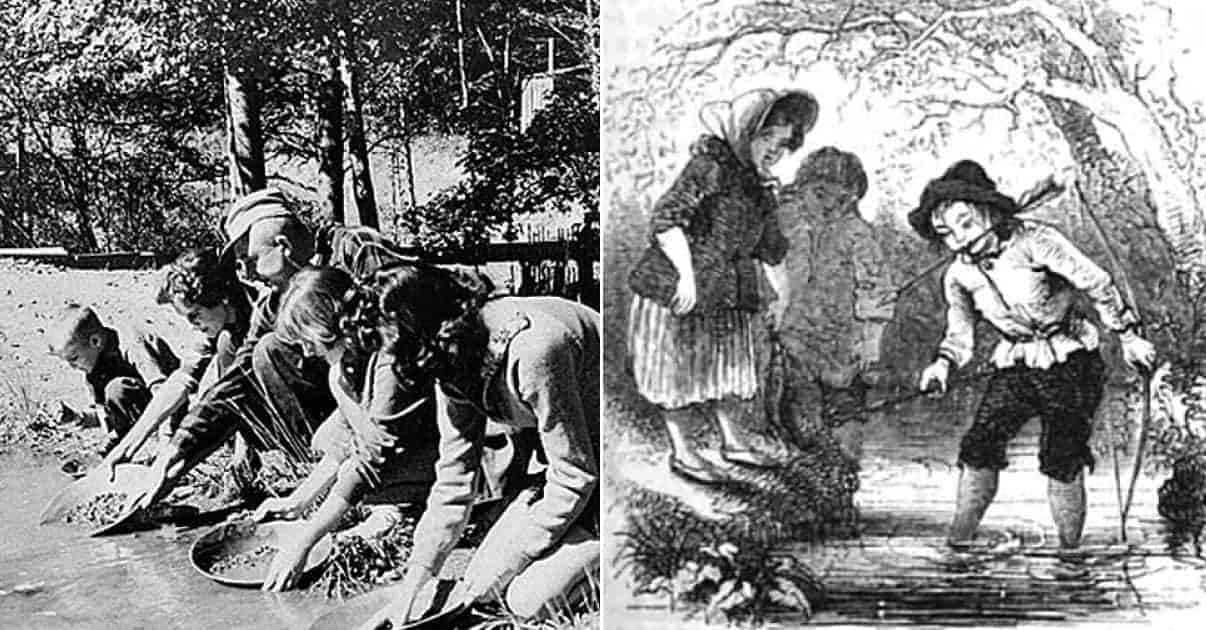On a spring Sunday in 1799, a 12-year-old boy skipped church. Deciding that fishing was more important for his spiritual needs than listening to a sermon, Conrad Reed successfully convinced his folks to let him spend a spring Sunday morning outside. While fishing, Conrad stumbled upon a funny looking rock. Curious about the 17-pound wonder, Conrad carried it home to show his father. After examining the rock, John Reed remained mystified, having no idea what it was other than interesting. Instead of throwing the rock back outside, the elder Reed placed it in front of a door. Thus began the first gold discovery in the United States; the gold nugget acted as a doorstop for two years!

The frontier of North Carolina was sparsely populated in 1799. John Conrad settled in what he called “upper” Mecklenburg County, roughly 20 miles north of a small trading town named Charlotte. Today, Reed’s farm is in Cabarrus County, which is home to the Charlotte Motor Speedway. Before 1800, the county’s population was less than 5,000 people within its 364 square miles (943 square km). Most settlers were hardworking farmers that grew corn, wheat, barley, rye, indigo, and tended to their livestock. Collectively, the farmers sent their goods to market in Charleston, South Carolina, a one-way trip of roughly 200 miles. Paper money and coins were scarce in the North Carolina Piedmont. People traded, or bartered, for the goods that they could not make for themselves.
Family farms dotted the landscape. The few families that had slaves owned only one or two or rented them from others when their labor was needed. This was in stark contrast to the large plantations in the eastern part of the state. For the most part, husbands, wives, children, and hired help kept the farms running by feeding and caring for livestock, planting and harvesting crops, and taking goods to market. The Reed farm was not much different from those that surrounded it. Many had streams or creeks and families attended church or religious meetings.
John Reed was a German immigrant. A former Hessian solider, Reed abandoned his post in Savannah, Georgia as a solider fighting for Great Britain during the American Revolution and headed toward the southern frontier of North Carolina. Upon his arrival, he established a farm, claimed the land as his own, and married. The Reeds had several children, whose labor was used for farm work. John Reed, like most farmers in the region, was illiterate and had no formal education. Yet, he was considered by his peers to be a man of intelligence. The frontier provided hands-on learning experiences. Women, who could read, often taught their children by using the family Bible or some other treasured book. Most of the farmers in the region were immigrants that arrived in America as soldiers, indentured servants, or were the children of such immigrants.
The lack of luxury goods and money in the North Carolina frontier meant that most farmers had little knowledge of the value of gold or what it looked like. Curious about his doorstop, and perhaps encouraged by Conrad, John Reed took his chunk of rock to a local silversmith in 1802. The silversmith did not view the rock as important to his trade so John Reed returned the doorstop to its rightful place. While preparing for a marketing trip to Fayetteville, John Reed took his doorstop to see if anyone in the city could identify it. A jeweler quickly identified the rock’s value and paid Reed $3.50, a week’s worth of wages for a farm laborer at the time.

